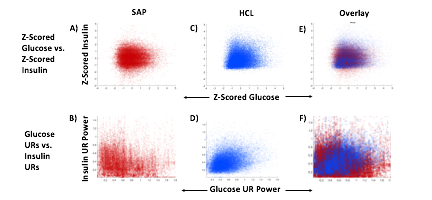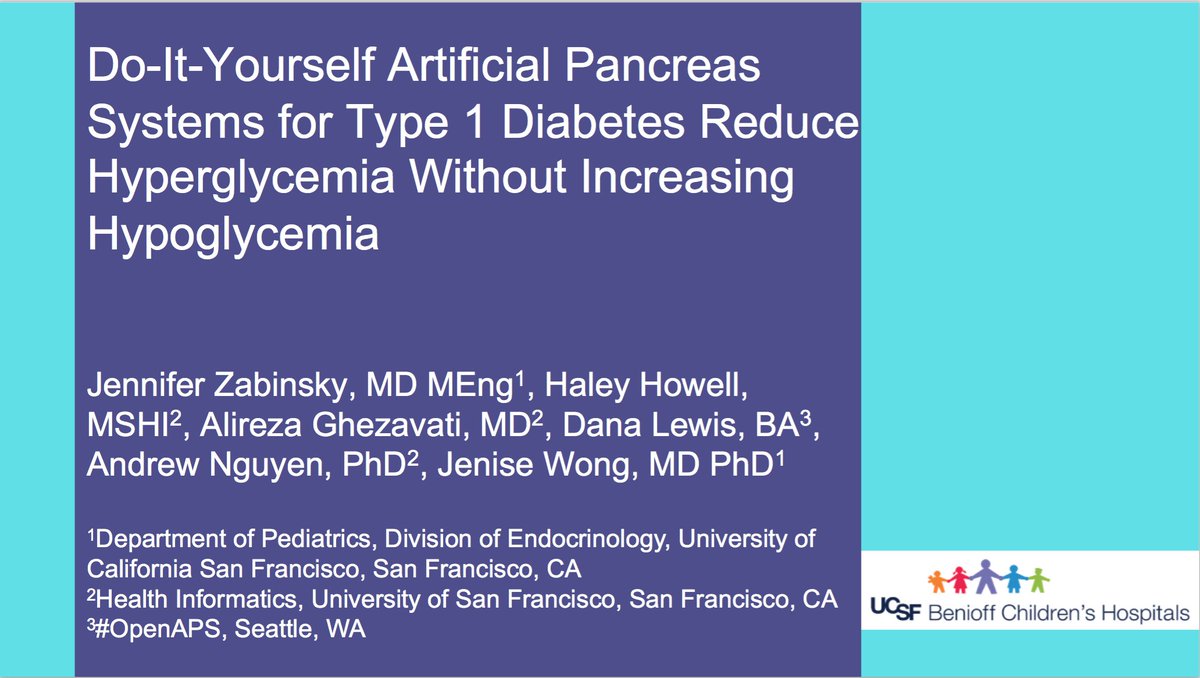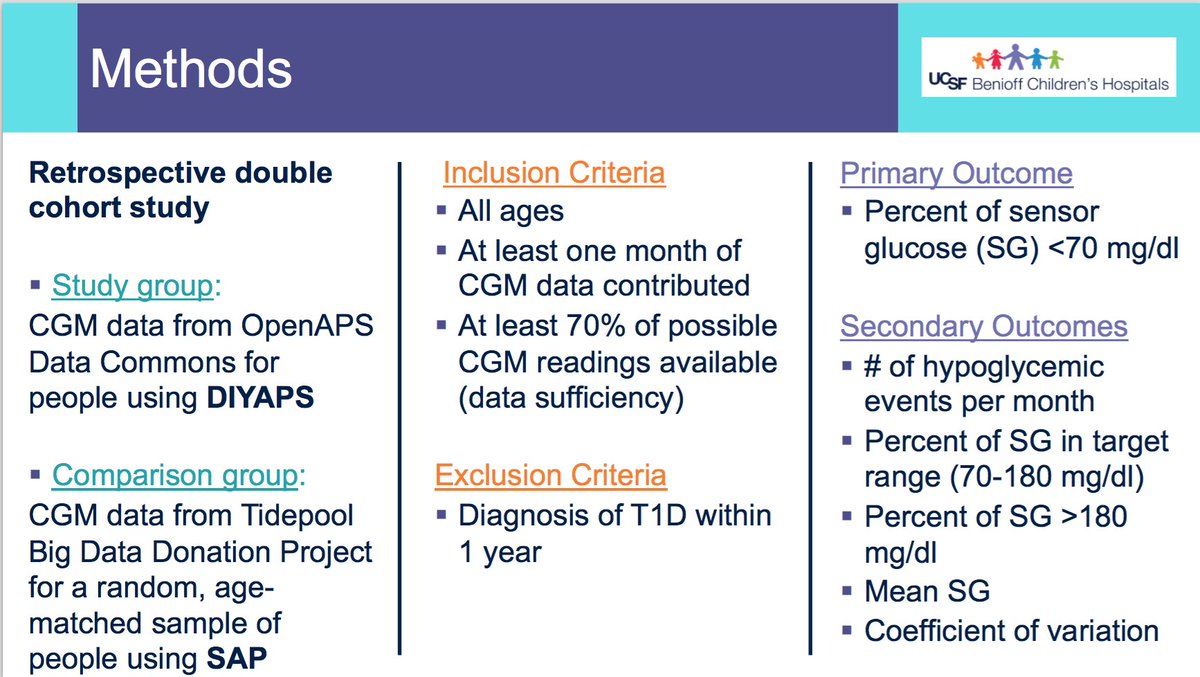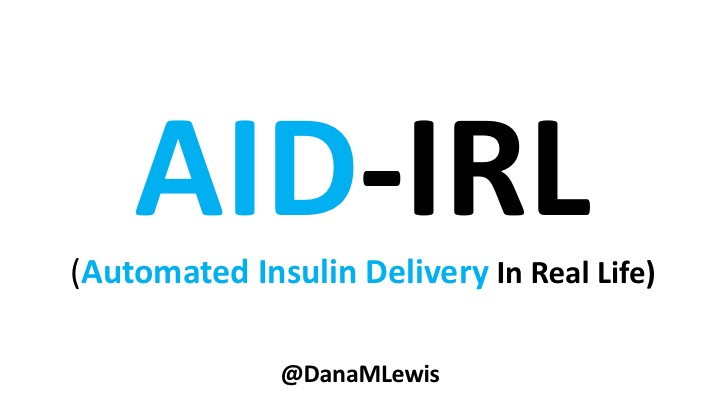THREAD:
Poster 99-LB at #ADA2020 by @danamlewis, @azure_dominique, and Lance Kriegsfeld, “Multi-Timescale Interactions of Glucose and Insulin in Type 1 Diabetes Reveal Benefits of Hybrid Closed Loop Systems“
(full content also available at bit.ly/DanaMLewisADA2…)
Poster 99-LB at #ADA2020 by @danamlewis, @azure_dominique, and Lance Kriegsfeld, “Multi-Timescale Interactions of Glucose and Insulin in Type 1 Diabetes Reveal Benefits of Hybrid Closed Loop Systems“
(full content also available at bit.ly/DanaMLewisADA2…)

Background - Blood glucose and insulin exhibit coupled biological rhythms at multiple timescales, including hours (ultradian, UR) and the day (circadian, CR) in individuals without diabetes. But, biological rhythms in longitudinal data have not been mapped in T1D. #ADA2020
It is not known exactly how glucose and insulin rhythms compare between T1D and non-T1D, and whether rhythms are affected by type of therapy (Sensor Augmented Pump (SAP) or Hybrid Closed Loop (HCL)). #ADA2020
Data & Methods:
We assessed stability and amplitude of normalized continuous glucose and insulin rate oscillations using the continuous wavelet transformation and wavelet coherence. #ADA2020
We assessed stability and amplitude of normalized continuous glucose and insulin rate oscillations using the continuous wavelet transformation and wavelet coherence. #ADA2020
Data came from 16 non-T1D individuals (CGM only, >2 weeks per individual) from the Quantified Self CGM dataset & 200 (n=100 HCL, n=100 SAP; >3 months per individual) individuals from the @Tidepool_org Big Data Donation Project. Morlet wavelets were used for all analyses. #ADA2020
Morlet wavelets were used for all analyses. Data were analyzed & plotted using Matlab 2020a, Python 3 in conjunction with in-house code for wavelet decomposition modified from “Jlab” toolbox, (code, Dr. Tanya Leise) and Wavelet Coherence toolkit (@cuixu). #ADA2020
Linear regression was used to generate correlations, and paired t-tests were used to compare AUC for wavelet and wavelet coherences by group (df=100). Stats used 1 point per individual per day. #ADA2020
^ Morlet wavelets (A) estimate rhythmic strength in glucose or insulin data at each minute in time (a combination of signal amplitude and oscillation stability) by assessing the fit of a wavelet stretched in window and in the x and y dimensions to a signal (B). #ADA2020
The output (C) is a matrix of wavelet power, periodicity, & time (days). Transform of example HCL data illustrate predominantly circadian power in glucose, & predominantly 1-6 h ultradian power in insulin.Color map indicates wavelet power (synonymous with Y axis height). #ADA2020
Wavelet coherence (D) enables assessment of rhythmic interactions between glucose and insulin; here, glucose and insulin rhythms are highly correlated at the 3-6 (ultradian) and 24 (circadian) hour timescales. #ADA2020
Results:
Hybrid Closed Loop Systems Reduce Hyperglycemia. See the visualization glucose distribution of SAP, HCL, and non-T1D. #ADA2020

Hybrid Closed Loop Systems Reduce Hyperglycemia. See the visualization glucose distribution of SAP, HCL, and non-T1D. #ADA2020


HCL Improves Correlation of Glucose-Insulin Level and Rhythm, compared to SAP. #ADA2020 



Hybrid Closed Looping Results in Greater Coherence than SAP.
(Non-T1D individuals have highly coherent glucose and insulin at the circadian and ultradian timescales, but these relationships had not previously been assessed in T1D.) #ADA2020
(Non-T1D individuals have highly coherent glucose and insulin at the circadian and ultradian timescales, but these relationships had not previously been assessed in T1D.) #ADA2020
Glucose-insulin coherence is significantly higher in HCL than in SAP.
This shows circadian (blue) and 3-6 hour ultradian (maroon) coherence of glucose and insulin in HCL (solid) and SAP (dotted) users. Transparent shading indicates standard deviation.
#ADA2020
This shows circadian (blue) and 3-6 hour ultradian (maroon) coherence of glucose and insulin in HCL (solid) and SAP (dotted) users. Transparent shading indicates standard deviation.
#ADA2020
Although both HCL and SAP individuals have lower coherence than would be expected in a non-T1D individual, HCL CR and UR coherence are significantly greater than SAP CR and UR coherence (paired t-test p= 1.51*10-7 t=-5.77 and p= 5.01*10-14 t=-9.19, respectively). #ADA2020
This brings HCL users’ glucose and insulin closer to the canonical non-T1D phenotype than SAP users’. #ADA2020
Additionally, the amplitude of HCL users’ glucose CRs and URs (solid) is closer (smaller) to that of non-T1D (dashed) individuals than are SAP glucose rhythms (dotted). #ADA2020
SAP CR and UR amplitude is significantly higher than that of HCL or non-T1D (T-test,1,98, p= 2.47*10-17 and p= 5.95*10-20, respectively), but HCL CR amplitude is not significantly different from non-T1D CR amplitude (p=0.61). #ADA2020
Together, HCL users are more similar than SAP users to the canonical Non-T1D phenotype in A) rhythmic interaction between glucose and insulin and B) glucose rhythmic amplitude. #ADA2020 

Conclusions, Future Directions:
T1D and non-T1D individuals exhibit different relative stabilities of within-a-day rhythms and daily rhythms in blood glucose, and T1D glucose and insulin delivery rhythmic patterns differ by insulin delivery system. #ADA2020
T1D and non-T1D individuals exhibit different relative stabilities of within-a-day rhythms and daily rhythms in blood glucose, and T1D glucose and insulin delivery rhythmic patterns differ by insulin delivery system. #ADA2020
HCL is associated w/greater correlation between glucose & insulin delivery rate, between ultradian glucose & insulin delivery rhythms; greater circadian & ultradian coherence between glucose & insulin, and lower amplitude swings than in SAP. #ADA2020
These preliminary results suggest that HCL recapitulates non-diabetes glucose-insulin dynamics to a greater degree than SAP. #AA2020
Future work is needed to analyze HCL system type, insulin type, etc that may influence rhythmic structure, as well as determining if stability of rhythmic structure is associated with greater time in range to help determine if bolstering rhythmic structure helps in T1D. #ADA2020
Acknowledgements: Thanks to all of the individuals who donated their data as part of the @Tidepool_org Big Data Donation Project, as well as the @OpenAPS Data Commons, from which data is also being used in other areas of this study, and @JDRF for study funding. #ADA2020
(/end)
(/end)
(You can find a longer written form version of this poster content, a PDF version to download, and all other posters co-authored by @danamlewis from #ADA2020 at bit.ly/DanaMLewisADA2…).
• • •
Missing some Tweet in this thread? You can try to
force a refresh













